 Somewhere between 5 Pointz in Queens and the tenements of the Broadway musical Rent lies Paris' own incubator for art: Les Frigos, literally "The Fridges." I ventured into Paris' 13th seeking a small art gallery for M-City's latest exhibition. I've read on blogs that the 13th is a hotbed for street art, but that didn't prepare me for what I discovered. Steps from the metro station, as I fumbled through my map, bold Krylon colors began seeping into my vision. I looked up and there before me was Les Frigos. "What is this?!" Jutting into the mid-day sky, amidst the clean steel and glass of the surrounding architecture, was a dilapidated castle, completely wrapped in art. Everything from wild style graffiti to Matisse-inspired nudes adorned its outer walls and surrounding fences. Add to that bass-heavy beats blast from its open windows, and all I could think of was "trashy Ivy League frat house?"
If it wasn't already a condemned building, it was certainly shooting for that status.
Though it seemed as though the building was off-limits, I made my way onto its grounds, and onto an open lot that perhaps once served as a moat. Massive graffiti pieces, throw-ups, and tags crawled up the castle's walls. And it wasn't some vestige of the past either. There were three writers there at that moment, spraying paint in the October wind.
 Exterior of Les Frigos The trio comprised OFS graff crew. Three 20-something white guys, dressed in hoodies, drinking Heinekens, and getting their creative vandalism on. One of them wrote "JEN" with a very ornate, flowery style. I asked him if "JEN" was his girlfriend. "No, Jen is my name." Woops. "What does OFS mean?" "It means Oh Fucking Shit crew." "Oh." Jen told me that in Paris there are very few places to paint without getting harassed. This was one of them. No one ever gets arrested here. (Clearly, it was broad daylight and these guys sans disguises were painting away.) And though the groundskeeper occasionally threatens to call the police, he never does.
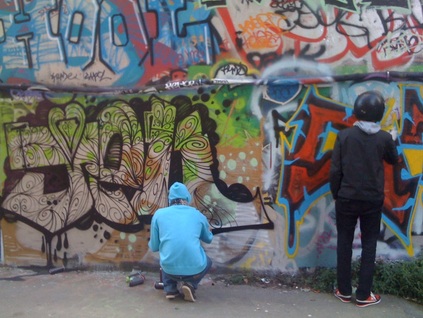 Jen gettin' busy. Why? I asked. Because the building is for squatters, mainly other artists, who obviously don't really mind. And unlike the permission-needed walls of 5 Pointz, which Jen sort of scoffed at, this environment was pretty much live and let live. So writers from all over Paris come to get up, go over other pieces, and maintain the authenticity of illegality. This attitude reflects the essence of Les Frigos. Once a 1920's cold storage facility for trains shipping produce, it has since been de-industrialized and taken to by artists and squatters for the past three decades. They eventually transformed the building and gave it new life by installing water, electricity, bathrooms, etc. It is now home to over a hundred rent-paying tenants and roughly 90 art studios. If you step inside, you're sure to find a labyrinth of floor-to-ceiling graffiti coupled with lively music. However, the future of Les Frigos remains uncertain. It's immediately clear that in the 13th, Les Frigos is the standalone holdout to the rehabilitation and dare I say gentrification of the neighborhood. It's located right in between the National Library of France and the University Denis-Diderot. Meanwhile, though this is a little unclear to me (damn Google translate!) the City of Paris has acquired the rights to the building. What that means for the occupancy agreements of the current tenants has yet to be seen. But until then, Jen and OFS will continue to decorate its walls, and so too will countless others. And for an art form that has always upheld ideas of transience and the finite-ness of things, the future may not really matter. So for now, Les Frigos may be in the cold, but it's still keeping art fresh.
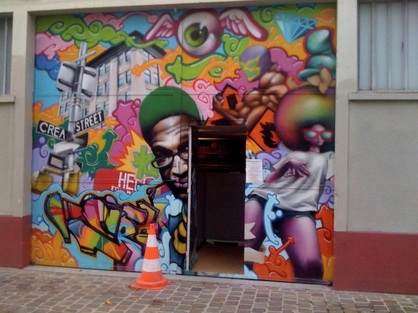 Entrance to Crea Street Delving deeper into the Paris graffiti world, in my latest podcast I interview Olivier Jacquet, graffiti artist, Graff It! magazine publisher, and owner of the street art store Crea Street. I was lucky to get the interview since I stumbled into his store on a random Saturday afternoon waiting for my ride at the Gentilly train station. Olivier was extremely friendly and gave great insight on where Paris graff writers get down, how they're cleverly evading the police, the different styles that come from various cities in France, and who's who in the Paris scene.
A few other interesting things to note: - Olivier is a family man, best evidenced by the fact that his 5-foot-tall mother was working behind the counter with him and knew every product in the store. Sadly, she declined to be photographed.
- Olivier also mentioned (if memory serves) that the graffiti scene in Paris goes way back to at least 1980.
- The woman that came in and started interpreting for us purchased not spraypaint, but a can of wood furniture varnish. Crea Street really does serve ALL creative types.
- Olivier has been publishing Graff It! since 1994!
- Olivier seems to frequent New York City and is tight with legendary graff writers like Cope2 and TATS CRU.
- The track "Police" that bookends the podcast is by Supreme NTM, the same Saint-Denis rap group that Olivier mentions had a significant impact on the graffiti scene since both were also graff writers. Here's their video for "My People" which celebrates graffiti culture:
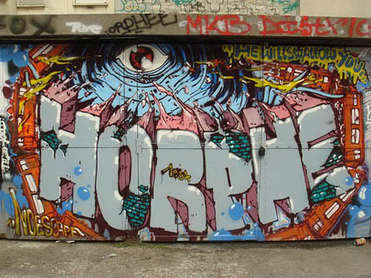 The top taggers in Paris according to Olivier are:
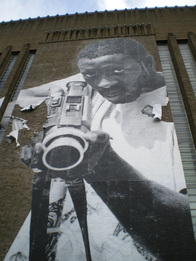 The 2011 TED prize for $100,000 has just been awarded to anonymous. TED has not revealed the award recipient's name, only a pair of letters--JR. They may be initials, they may be shorthand for "Junior," or they might mean something else completely different ("Jubilant Rhinos!"). One thing the letters do stand for, though, is thought-provoking street art. JR is a Paris-bred street artist, or as he prefers, photograffeur, a play on the words photographer and graffeur, the French word for graffiti artist. As his origin story goes, he started out writing graffiti until he happened upon a camera on the Paris Metro. He began photographing the youth of the banlieues and wheat-pasted their larger-than-life-size images all over the suburbs. Illegally, of course.
Then he went global. In the past decade, he's postered urban slums all over the world with massive images of their local inhabitants. From favelas in Rio to rooftops in Kenya, he has gotten up. His goal: to draw attention to the humanity of everyday people in places that are far too often overlooked, impoverished, and plagued by conflict. As he says, "It's about breaking down barriers" through the image of the human face. "Everything is about eye contact." In 2006, returning to his native Paris one year after the country erupted in youth riots, JR snapped photos of the suburban youth from Montfermeil, Clichy-sous-Bois, and others. This time, instead of posting the young, brown faces in their own neighborhoods, he took their visages straight to the center of bourgeois Paris. The city ultimately embraced the work, "Portraits of a Generation," and in fact wrapped it's own city hall with these images, most likely in hopes of diffusing tensions and promoting tolerance. 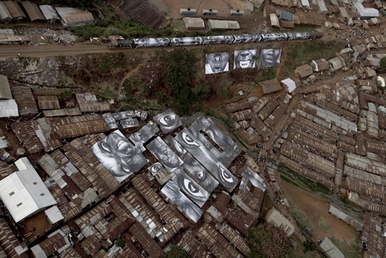 Shrouded in anonymity and myth, he maintains a Banksy-like persona of mystery, intelligence, and spectacle. But unlike the sardonic Brit, JR takes up social consciousness as his explicit agenda. He replaces humor with a sincerity to depict the lives of his subjects. And in fact, the local people he photographs also help him wallpaper their neighborhoods. Community engagement leads to community empowerment. TED lauds his work as "pervasive art" that engenders two important things: "The images are transported to London, New York, Berlin or Amsterdam where new people interpret them in the light of their own personal experience. And ongoing art and craft workshops in the originating community continue the work of celebrating everyone who lives there." [bold emphasis added by me]The TED prize committee hopes that JR's work could catalyze the entire TED community to support a philanthropic art project. Now with a hundred grand in hand, what will the photograffeur do next? Previous TED awardees, such as Bill Clinton, Bono, and writer Dave Eggers, have started various awareness campaigns. The most recent awardee, The Naked Chef Jamie Oliver has used the money to promote healthier eating habits in North America and the UK. Knowing JR who keeps the local community in mind, he will probably keep doing his thing but just go bigger. Who knows? Maybe this time next year satellite pictures of North Korea will have gigantic photographs of youthful eyes staring up at us. Here's a great video of his recent work displayed along the Seine in Paris.
In this slide show, I take a look at the work of Paris street artist Speedy Graphito in his latest show at Art Partner Galerie. He comes from Paris' first generation of graffiti and street artists. In this exhibition, he draws on that long history, incorporating a number of street art styles and playing on the evolution of street art from its days as loathed youth vandalism to its current stature as darling of the art world. Like Bansky and Mr. Brainwash (whose work is appearing on the streets and stores of Paris right now), Speedy is cashing in but with a very knowing, self-aware wit. Here Speedy demonstrates his process as he prepares his painting "Dead or Alive."
 The three of us, cramped into the backseat of the VW Golf, suddenly got into a contest over who's visited the most countries. I boasted "8!" which soon ranked low on the impressive scale when Mar retorted with "12!" as he proceeded to list exactly which countries he's been to. But then both of us were dwarfed by Ich when he burst out with "16!" Counting with his fingers, he ran down the list of countries spanning most of Europe, North America, and Japan. Not bad, I thought. I wonder how many frequent flyer miles he has. It was an odd conversation to have amongst us three grown men. It's the kind of talk I'd expect to have on the school playground in first grade. "I have six GI Joes, how many do you have??" But when you speak almost no French and the French people with you speak a limited amount of English, you take what you can get. Unlike myself, Ich was genuinely excited to talk about all the countries he's visited, many of which had to do with international Hip Hop events. His eyes lit up even more though when he recounted the kind of food he's had in every place. But it's not that he speaks of bratwurst from Germany or fettucine from Italy. Instead he has the unique ability to rattle off the McDonald's menu and highlight its variations in every single country. "You have cheeseburger with shrimp in Japan!" And it doesn't end with McDonald's. He can also name every variety of Fanta and Schweppes according to the flavors available exclusively in a country. So when Ich goes to the Netherlands, he always makes it appoint to stock up on Fanta Cassis to take back to France, a Cassis-less land. He does the same with flavored bottled water and assorted candy.
 Why does any of this matter? Well, allow me to paint the rest of the picture. During that 4-hour car ride, the only thing we listened to was the latest Lil Wayne mixtape and the new Nas & Damian Marley collabo album. Ich and Mar don't even understand a majority of what I say in English. How much can they really absorb of these rappers spitting fast rhymes riddled with local references and witty wordplay? Mar admitted that he looks up lyrics on the internet and just listens to the tracks over and over again till he gets it. In contrast to the ethnic pride apparel I mentioned in a previous post, Ich sat there decked out in his New Era cap, I heart NY hoodie, and Japanese anime t-shirt. Plus I can't forget his Dr. Dre Beats headphones saddled around his neck. Ich is black but yet goes by this Japanese name. It's short for Ichigo, the protagonist of his favorite anime Bleach. In fact everyone in his dance crew is named after a character from Bleach. He also has a second crew called Super Mario Bros. I really don't know what his real name is. Yes, hip hoppers do tend to take on aliases, but usually you hear someone refer to them by their birth name once in a while. Not the case for Ich.
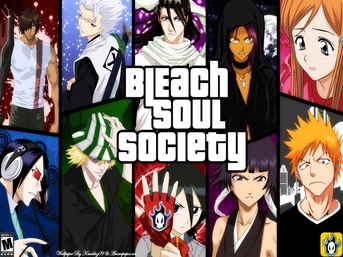 Ich's two favorite destinations out of the whopping 16 countries he's visited? New York City and Japan. He loves New York because quite simply it's the Mecca of Hip Hop. He loves Japan not only because of its incredible dance scene, but perhaps more so because of anime and manga. When I remarked how expensive Japan is, "C'est tre cher," (OK, I speak a tiny bit of French) he revealed that he saved 9,000 euros to spend one month there. It enabled him to live freely (ironically) and give in to his material desires. Indeed he must have purchased every single bit of Bleach paraphernalia. By the time the manga convention came around to Paris last September, Ich was so disappointed that he already had every product they were selling. Though I firmly believe in the power of Hip Hop, I question the repercussions when it's propped up firmly beside these other forms of global commodities and obsessive consumption. In part I came to Paris to get away from McDonald's and CocaCola and Target and all the crap I own. But I also came to connect with Hip Hop out here. Is it at all possible for me to engage one without the other? Later the following night, Ich was inhaling a McFlurry with a topping that was only available in Holland. "C'est la merde." I didn't quite follow. Was he saying that it was bad? "No," he said. "It's the shit."
 Bear with me folks (or is it bare with me?), I'm trying something new with this entry. You might've noticed the nice little SoundCloud mp3 clip at the bottom of this entry. That's right folks, I'm breaking my new single! It's called "French Rapper's Delight." I kid, I kid. It's actually my first podcast. I'm very new at this medium so please consider, that from here, I can only go up. Today's topic of discussion: origins of the French Hip Hop scene and its brightest star MC Solaar.
I realize that I forgot to mention that the intro music for the podcast, in case you didn't catch it, was MC Solaar's debut single "Bouge de la" which more or less means "Move on" or "Get out of here." For more on Solaar, check out his extensive bio on RFI Musique. Additionally, here's more background on the actions taken against French rappers following the 2005 riots.
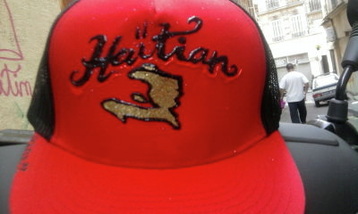 A guy I met makes custom ethnic apparel Fashion is undoubtedly one of the core elements of Hip Hop. After all, 1990's hip hoppers practically made the Tommy Hilfiger brand. And where would New Era fitteds be without Jay-Z? Hip Hop, in every one of its art forms, is all about stylistic expression. It's no surprise then that fashion, as an outward expression of style, is so embraced by the Hip Hop generation to connote culture and identity. It's about reppin' who you are and where you're from. The glocalized Hip Hop community here in Paris and France puts its own twist on that concept and the outfit trends from the US. Sure, the fitted caps, baggy pants, and fly sneakers remain a staple, but here young people spice up their wardrobes with a smattering of ethnic and religious roots.
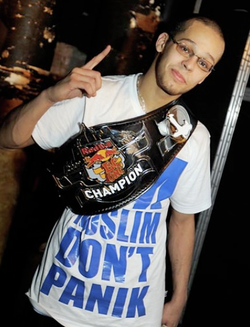 World b-boy champ Lilou At every event I attend, I always feel like I'm at a convening at the UN. In the middle of a cypher, there will be a gleaming turquoise jacket with "ALGERIE" embroidered across the chest. To the left, I'll spot the outline of the African continent colored in bright red, green and yellow, on the front of a sweatshirt. I'll pick out the word "SENEGAL" discreetly wrapped around a friend's wristband. And then of course, my favorite Tee yells out to me, with huge block letters, "I'm Muslim, Don't Panik!" As I observe, I notice that I too am rockin' my favorite Philippines revolution crew-neck.
Then there's the case of my friend Sam. I've seen him all of twice and both times he's worn the same t-shirt. Either that I always catch him around the same time as his laundry cycle, or he reserves this shirt specifically for Hip Hop gatherings. The shirt reads, "Algerien Pur Souche," basically "Pure Strain Algerian."
It's ironic because he's blonde-haired and blue-eyed. Being the nosy blogger that I am, I tried to pry the ethnicity out of him.
"What's your ethnic background?"
"Huh?" (His english is not that advanced)
"Where is your family from?"
"Algeria. I'm Algerian."
"But you don't look Algerian." (so insensitive, I know, sigh)
"My mother is French but she grew up in Algeria where she met my father."
"Ahaa!"
 'Pure Strain Algerian' Sam, then, is not pure strain Algerian. But yet, his identity, regardless of genetics, most certainly is. The shirt proudly proclaims that identification, which is particularly useful in these settings that are predominately brown. Without the tee he might easily be relegated as an outsider. Instead, he wears it in defiance of his French heritage to resolutely say, "I am part of this culture, OUR culture." This need to assert ethnic and religious identity in these Hip Hop spaces is interesting because mainstream American Hip Hop can sometimes be so devoid of it. For example, the Caribbean heritage of icons such as DJ Kool Herc, Notorious BIG, and Busta Rhymes is not very well known. Neither is the Islamic faith of rappers such as Mos Def. In an America that's wrapped up with racial consciousness, these other forms of identities take a backseat to blackness. France, on the other hand, frames it's own issues around otherness along the lines of immigration and Islam. The sentiment then is not so much racist as it is xenophobic and islamophobic best represented by Sarkozy's most recent efforts. No wonder then that the Hip Hop heads in France resist by asserting ethnic and religious pride.
But true, not all drape themselves in flags and call it a day. Some are pushing boundaries or in fact re-drawing them. At Who Iz Underground, a guy walking around in his black letterman jacket would occasionally stop to chat up some friends. He'd open up his backpack and pull out some fresh white tees for them. He'd leave and they'd put them on immediately. Suddenly, a number of people had written all over them, "UNIVERSAL STREET." It didn't matter what country, ethnicity, or religion you came from; the culture and the experience is always the same. Street is Street. What's important is drowning out marginalization through unity and solidarity through the language of Hip Hop.
Below is a little recap I made of the this past weekend's over-sized Paris street dance competition Who Iz Who: A few interesting things to point out about this particular competition: - The 2-day event hosted contests in the so-called traditional Hip Hop dances of Popping, Locking, Breaking as well as contests in Hip Hop, a separate category for Krumping, House dance, and Vogue.
- Each contest averaged about 70 entrants each, and more than 100 for Popping and about 200 for Hip Hop!
- Dancers came from all over France, Germany, Italy, Sweden, and maybe a handful from the US (do I count as US or France?).
- There were judges for each particular style of dance, of whom the majority were from the US. Clearly the cultural imperial power still making its presence felt and deciding what's considered good.
- Rumor has it that the original Krumping judge scheduled to come Tight Eyez, Krump pioneer made famous by the documentary Rize, bailed because he thought Who Iz Who was too commercial!
- Indeed, many at the event grumbled that the event costway too much to attend and was merely put on to make dollar$$$...woops, I mean euros. For this reason, some people didn't bother to show up for Day 2 which cost 25 euros a ticket.
- Another rumor circulated after the event was over that a bag full of thousands of euros in cash payment for the DJ's and judges went mysteriously "missing."
- EDIT: Also note that the final battles took place at Palais des Sports which is a concert venue for the likes of Elton John, Boyz II Men, and the Blue Man Group. Could you imagine anything e
And what's the deal with all the Krumping here in Paris? Why do I have to cross the Atlantic to see this American-made dance? In NYC, I've only seen this LA street dance performed mockingly (east coast, west coast bias? perhaps). It's surprising that out of all the newer street dances in the US, from Get Lite and Flexing from New York to Turfing in Oakland to Jooking in Memphis, the ones that have really taken hold here, Krumping and Jerking, are both from LA. Something tells me it has a little something to do with that Hollywood magic. Then again, maybe in my ignorance, I simply haven't seen the rest. I do however appreciate that the hyper agressive Krumping battles at this event were always followed by deliberately effeminate Vogue dancing (see the incredible Javier Ninja at the end of the vid for an example).
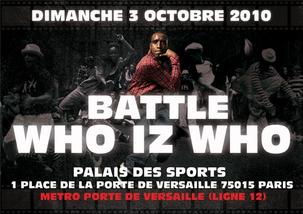 Who Iz Who, the fifth annual Paris street dance competition will be taking place this weekend. After the warm-up battle that took place at La Defense two weekends ago, this is the main event. 28 dancers chosen to compete from over 600 participants from all over Europe in popping, locking, wacking, house, and hip hop. 4000 spectators will converge at the Palais des Sports tomorrow at 3PM. Get tickets here. A taste of what's to come:
|




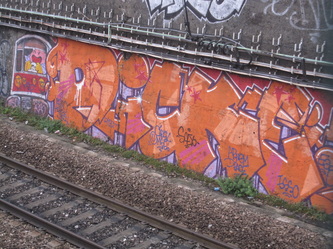
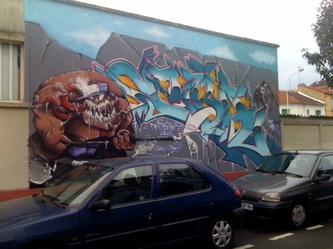

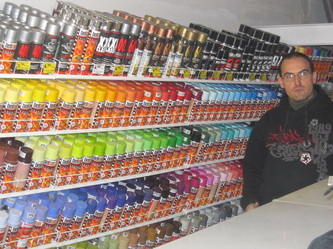
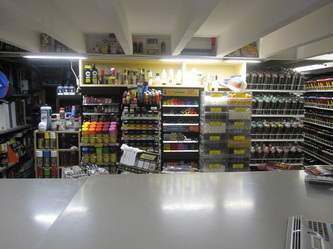
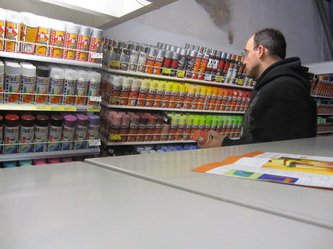

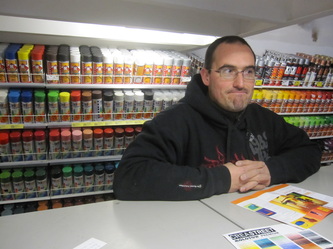












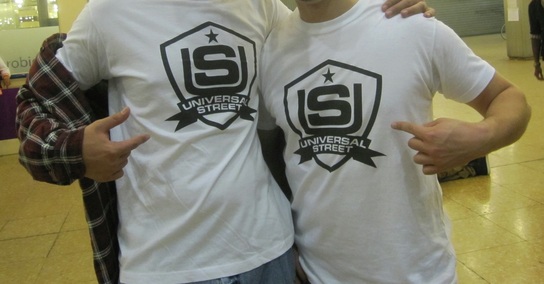

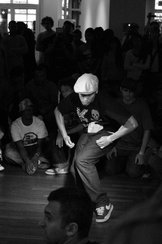
 RSS Feed
RSS Feed